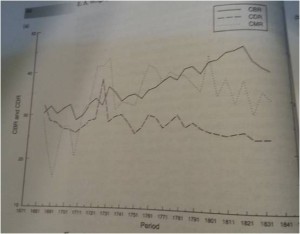Standards of Living during the Industrial Revolution
The debate about living standards in the Industrial Revolution has recently focused on anthropometric measures, such as height and mortality, and linked these to the ability to work more intensively. Describe how these factors may be related. Discuss what the anthropometric evidence reveals about living standards in this period.
Anthropometric measures add a new light on the debate and show whether people were healthier as a result of the industrial revolution. If they were then they would have been able to work more intensively because they would need fewer days off work due to fatigue or illness. Schultz believes that there is a positive relationship between height and productivity because height is a measure of nutritional status and better fed, healthier people could work harder. [...]
